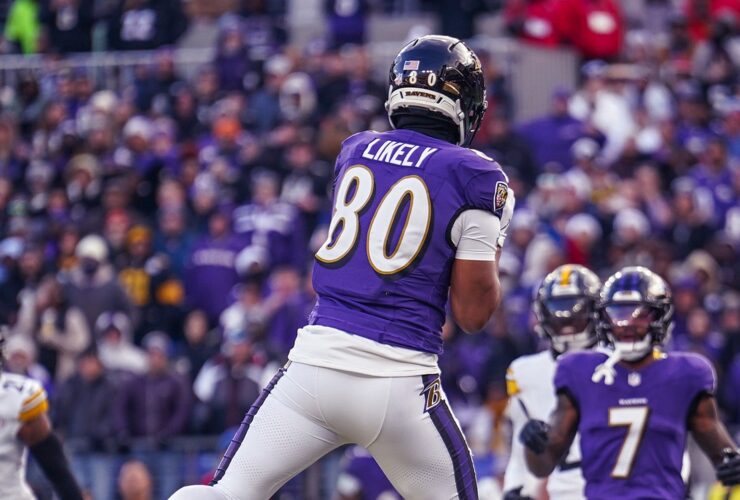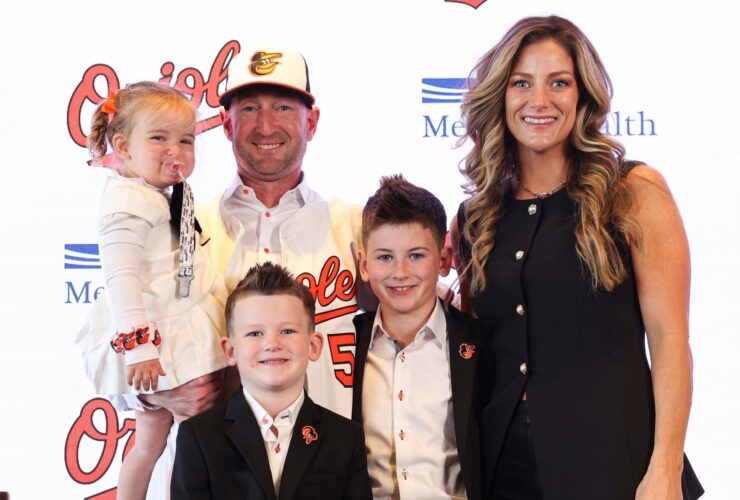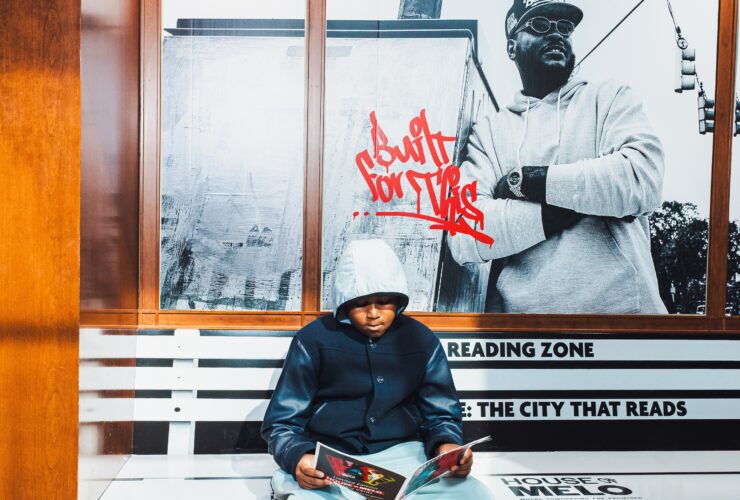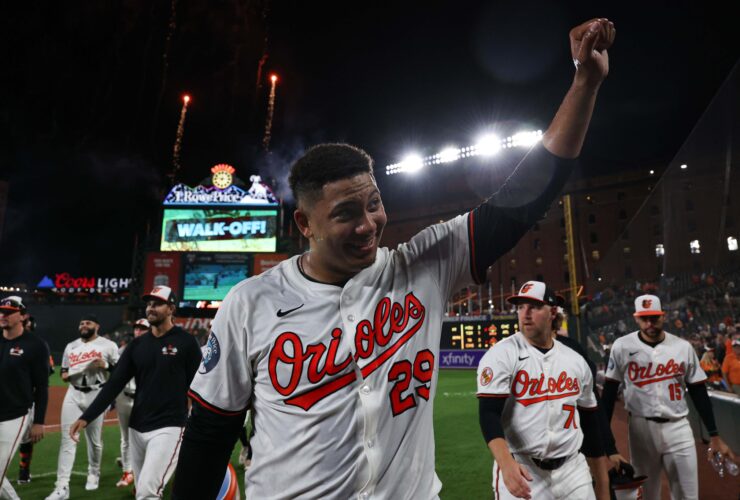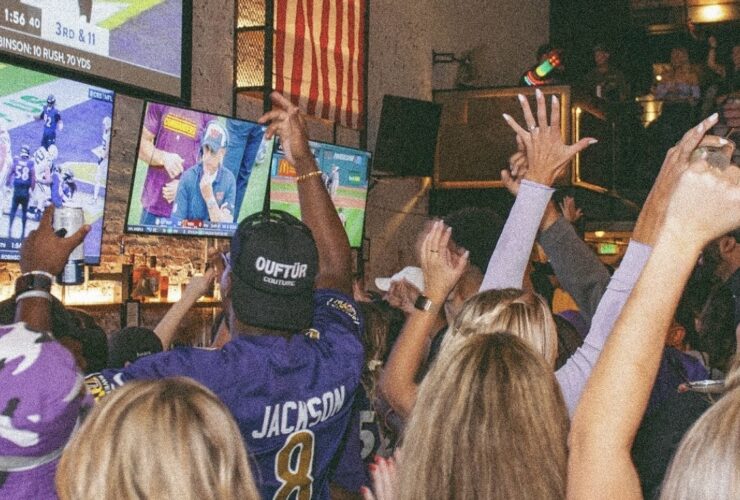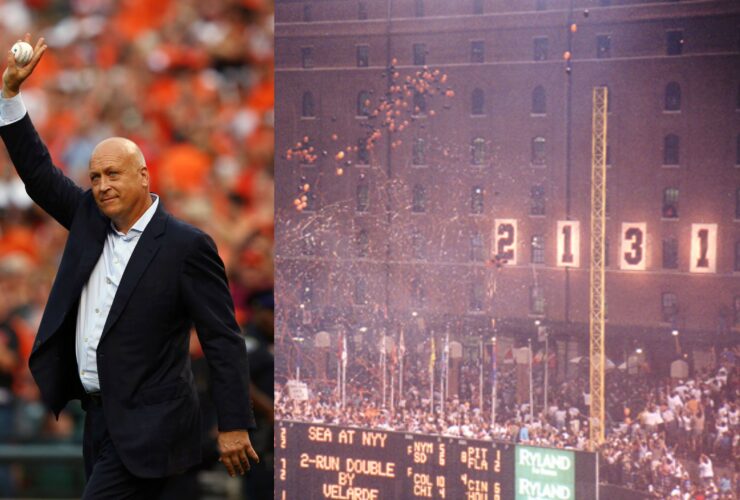Pitch Perfect
Before Darren O'Day mastered his submarine delivery, the Orioles' reliever was a washed-out beer leaguer.

n the world of sports, the tired cliché—“I’d play for free if I had to”—can come across as particularly rich to the cynical fan, especially when uttered by a man who just signed a four-year, $31 million contract to throw a baseball.
But Darren O’Day, the Orioles relief pitcher who just said it, is much too bright a guy to flippantly deliver hackneyed phrases. His words, as O’s manager Buck Showalter says, “carry weight,” and, in this case, have history to corroborate them.
The summer after his freshman year of college, O’Day joined a men’s league team in his native Jacksonville, FL. Following a solid, if unspectacular, high school career, he’d passed on offers from a few small colleges and attempted to walk on as a non-scholarship player at the University of Florida, which, after a six-week audition, cut him. He dismissed the coaches’ suggestion that he transfer to a junior college to improve his game, instead deciding to concentrate on academics (he majored in animal biology with the intention of becoming a veterinarian) and enjoy everything that Gainesville, a world-class college town, had to offer.
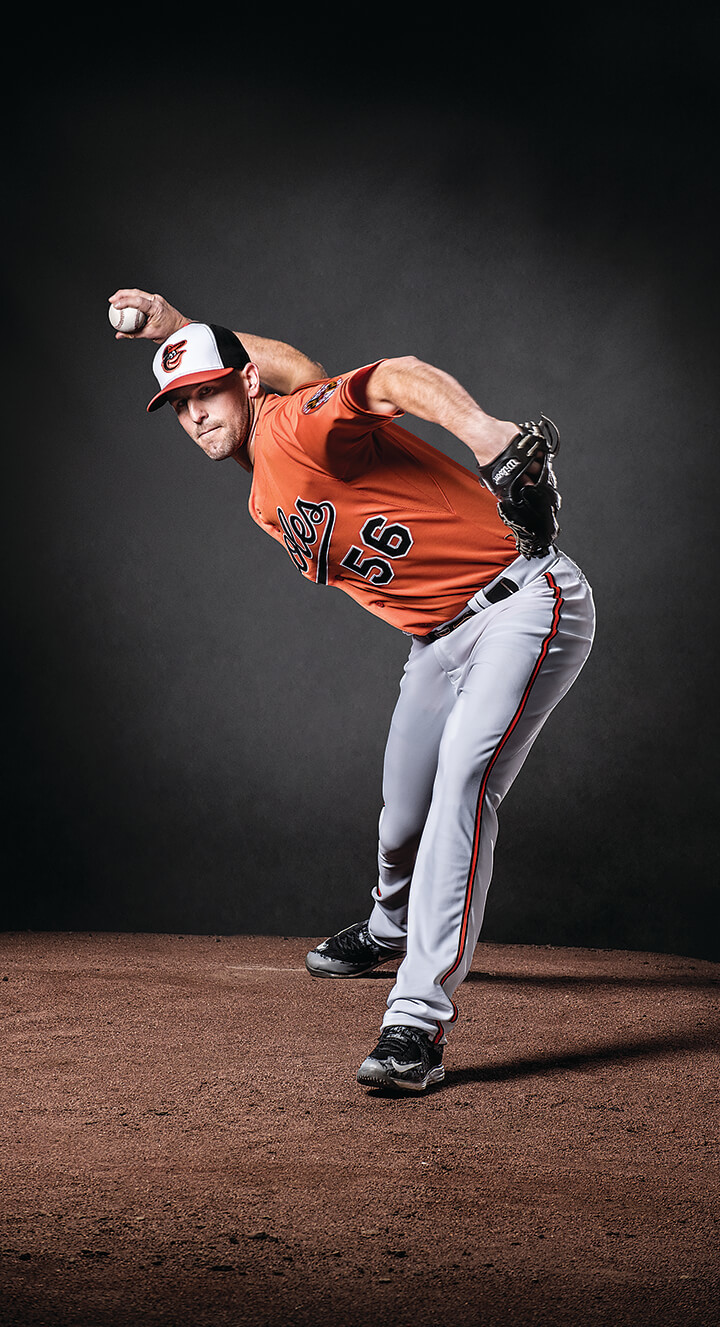
Darren O'Day's patented side-arm pitch.
His baseball life seemed over. The sport was now more of a pastime.
“Beer league, they’d call it, because there’s guys smoking heaters [cigarettes] in the dugout, drinking beer before and after games,” he says, between bites of a three-egg omelet packed with mushrooms, onions, peppers, bacon, sausage, and ham. It’s a sunny January morning at a breakfast joint in Ellicott City, about a month after this unlikeliest of fan favorites re-signed with Baltimore. “I was playing shortstop, batting cleanup, hittin’ homers. It was probably the most fun I ever had playing baseball, because it was the first time it wasn’t to win. We still wanted to win, but it was just kind of screwing around having fun.”
Primarily a pitcher in high school and during his brief initial stint as a Gator, O’Day also toed the rubber for his 18-and-over municipal league team. Only this time, he was experimenting with a quirky sidearm delivery that was proving baffling to hitters.
“Earlier that summer after my freshman year, I was playing catch with my brother behind a lake house we used to rent,” he says. “I started goofing around throwing sidearm. He was like, ‘That’s pretty good. Throw another one.’”
So he did. And then another. His older brother, Kyle, took notice of the increased movement and pop on his pitches.
“Somehow, when he dropped down, he didn’t lose any velocity,” says Kyle, now a coach of endurance athletes in Atlanta. “In the micro sense, playing around with some sidearm stuff was kind of a goof, but in the macro sense, it was as if he was trying to find something.”
Suddenly, O’Day was mowing down hitters at an exhilarating rate. Encouraged by his newfound effectiveness, he decided to come out of “retirement” and once again try out for the baseball team when he returned to Gainesville for his sophomore year. He’d added about 15 pounds of muscle to his previously lean frame, completely reconstructed his throwing motion, and gained about three miles per hour on his fastball. This time the coaches not only found a roster spot for him, they eventually gave him a scholarship and made him the team’s closer.
“I worked in the athletic department when he was playing at Florida, and I remember a lot of guys saying, ‘What in the world happened? Your brother got cut last year and now he’s unhittable,’” Kyle says. “I think it was all that movement. He figured something out.”
Nearly 15 years later, hitters are still trying to figure out O’Day. They’re not having much luck.
TECHNIQUE / ANATOMY OF THE SUBMARINE PITCH: O’Day is known for a unusual pitching motion that hasn’t been used very frequently in MLB.
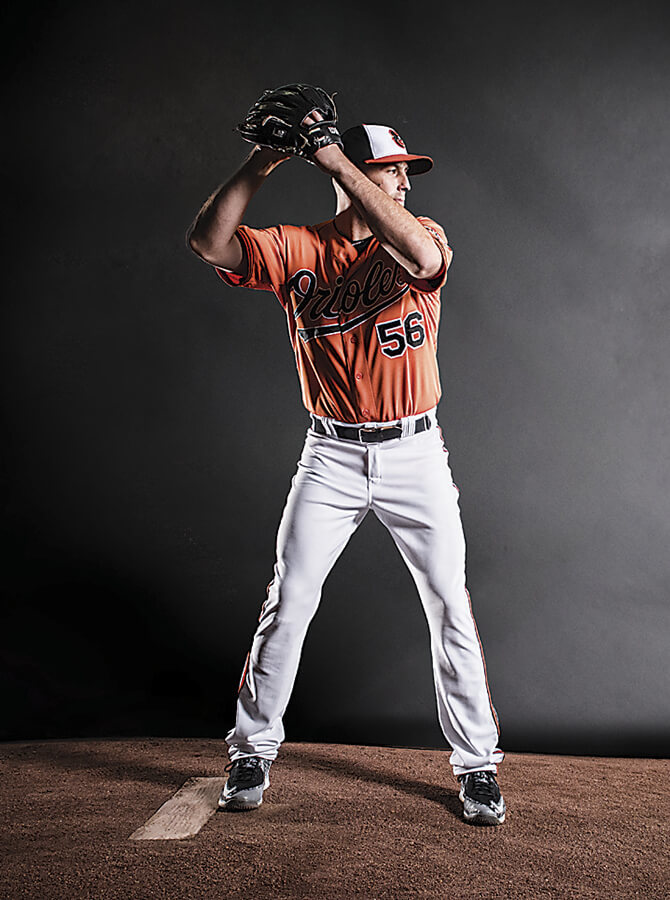

start “I do a lot of visualization after getting the catcher’s sign. But pitching well means you can’t be thinking a lot about mechanics.”
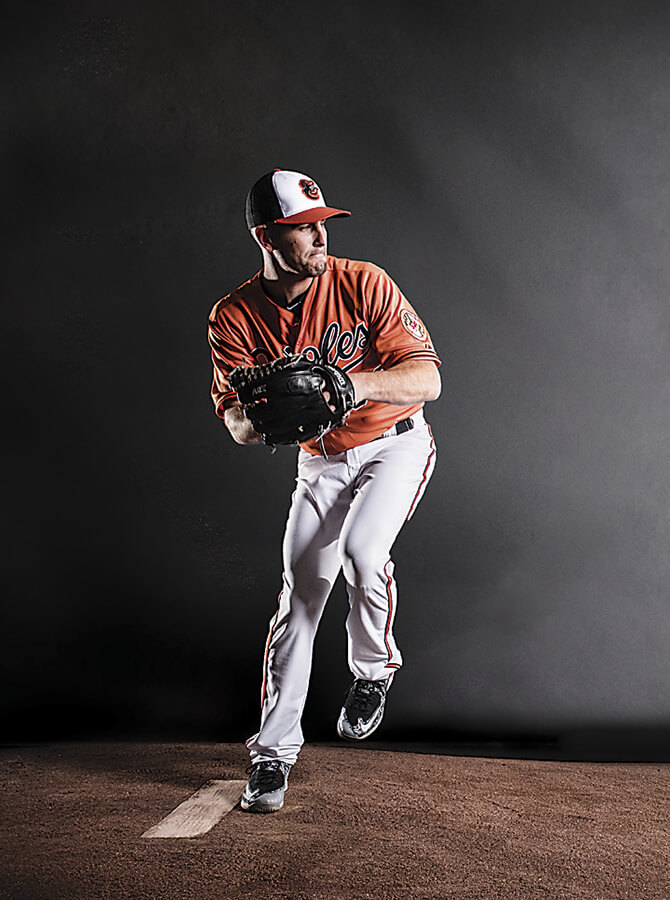

windup “I use a a hard break with my hands [held up high initially] to get my arm started,” O’Day explains. “That’s a timing thing really.”
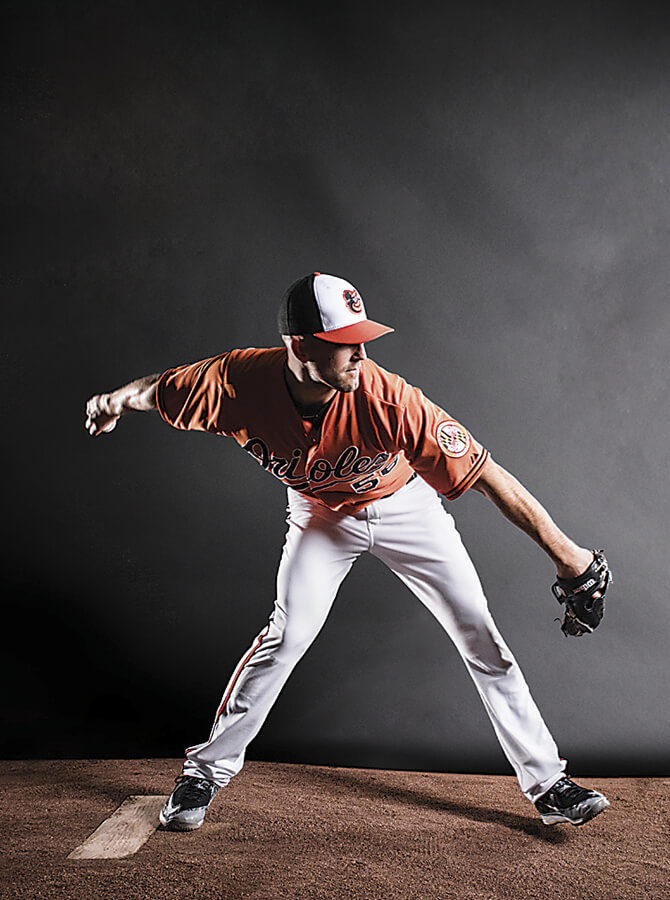

early cocking “I load up my body weight on my back leg and get down low by bending at the waist. I go straight toward home from there.”
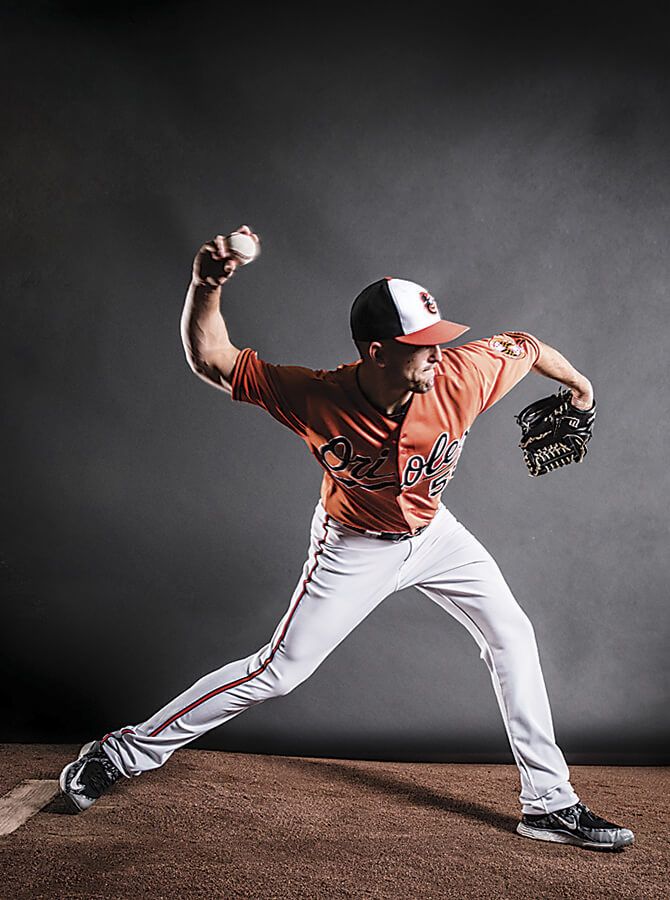

late cocking “I imagine a plate of glass about 4 to 4 1/2 feet high that I’m trying to throw under. I can’t come up until I release the ball.”
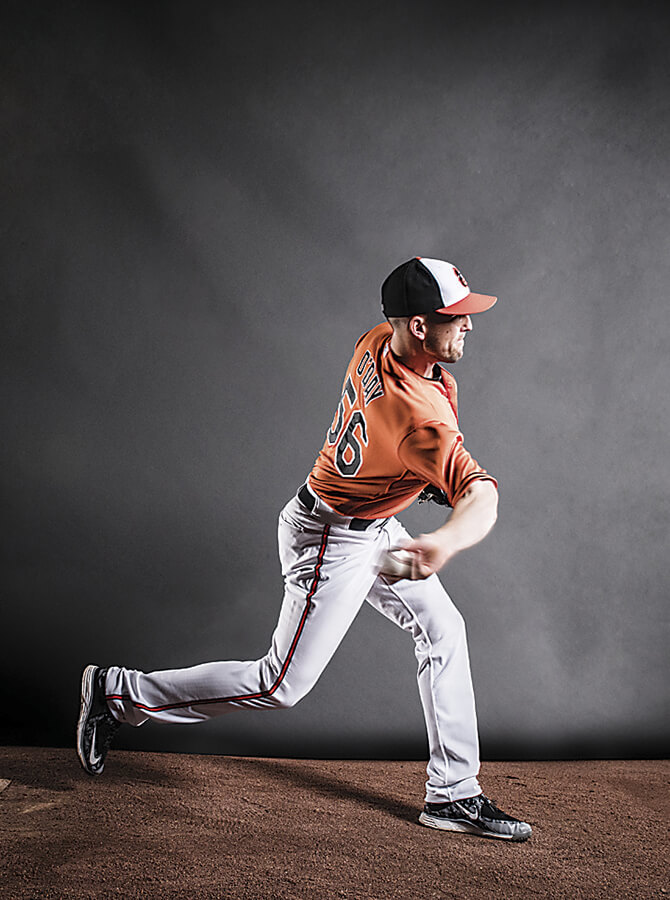

release “It’s the same release point for all three of my pitches—the four-seam fastball, the two-seam fastball, and the sllder,” O’Day says.
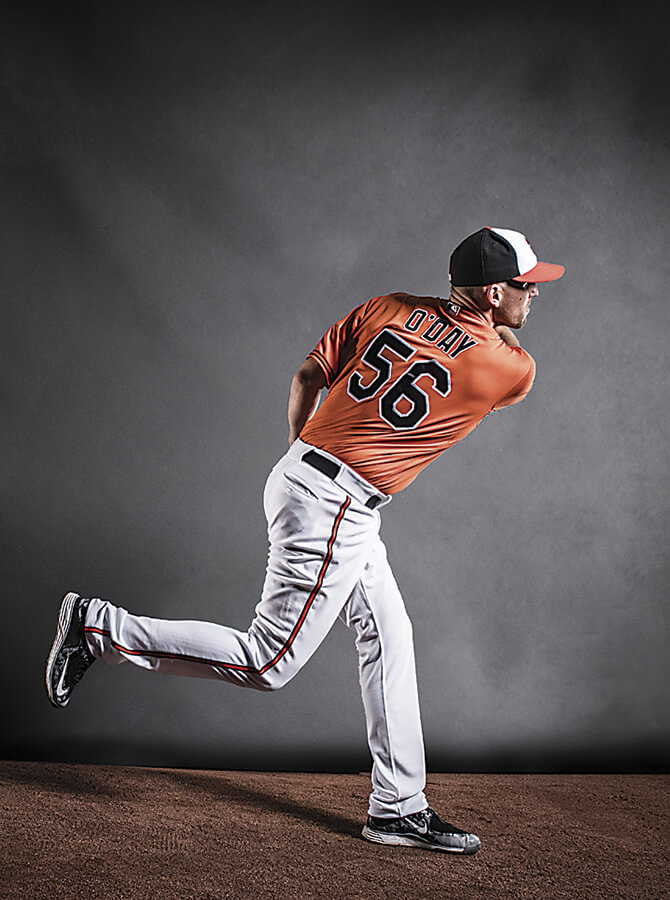

follow-through “Yeah, the guys in the dugout call the rising fastball, ‘The Jennie Finch,’” laughs O’Day, after the former All-American softball pitcher.


start “I do a lot of visualization after getting the catcher’s sign. But pitching well means you can’t be thinking a lot about mechanics.”


windup “I use a a hard break with my hands [held up high initially] to get my arm started,” O’Day explains. “That’s a timing thing really.”


early cocking “I load up my body weight on my back leg and get down low by bending at the waist. I go straight toward home from there.”


late cocking “I imagine a plate of glass about 4 to 4 1/2 feet high that I’m trying to throw under. I can’t come up until I release the ball.”


release “It’s the same release point for all three of my pitches——the four-seam fastball, the two-seam fastball, and the sllder,” O’Day says.


follow-through “Yeah, the guys in the dugout call the rising fastball, ‘The Jennie Finch,’” laughs O’Day, after the former All-American softball pitcher.
You’d think a Major League Baseball player who spent his childhood in the Sunshine State would be most comfortable in cleats. Or flip-flops. But growing up, O’Day’s favorite footwear was ice skates. His father, Ralph, is from Chicago, and coached O’Day’s youth hockey team.
“I had more fun playing hockey than I did baseball, but I just wasn’t as good at it,” says O’Day, 33. “You’re in Florida, so the competition wasn’t the best. I was a center iceman because I had decent puck skills, but I found I was good at skating backward, so I turned into a defenseman, which I really liked because it was a little bit more aggressive.”
Like all professional athletes, O’Day is fiercely competitive. He still skates, and slyly slides in a comment about “skating circles” around his Orioles teammate, Maine native Ryan Flaherty, at a rink in Laurel. Perhaps if his dad had never migrated south, O’Day today would be the toothless variety of pro athlete, but as it turned out, his athletic future rested with his right arm.
At Bishop Kenny High School in Jacksonville, O’Day played a little third base, but was focused on the mound. Using a conventional overhand delivery, his fastball reached the mid-80s, and he was named all-city as a senior. But professional scouts and coaches from major collegiate programs weren’t interested, so O’Day tried to parlay baseball into a ticket to a top academic school. The Johns Hopkins University passed, so he decided to join his brother in Gainesville.
After his pitching metamorphosis that fateful summer between his freshman and sophomore years, O’Day thrived. He earned Southeastern Conference Academic Honor Roll accolades each season, and when Florida made the 2005 College World Series in Omaha, he pitched four-plus innings to earn the win against hometown favorite Nebraska.
“You feel like you’re a big leaguer for the time you’re there,” he says. “You get meal money, there’s a police escort, you stay in a nice hotel. You’re on TV, you’re talking to ESPN’s Erin Andrews, who’s touching your shoulder. Twice. You’re like, ‘I’ve made it.’”
Because of his age, O’Day was eligible for the major league draft after three of his collegiate seasons. Not once was he chosen, which actually turned out to be fortuitous for several reasons. During his fourth year at school, O’Day found himself enrolled in a Friday morning speech class with a cute blonde named Elizabeth.
“Thursday night in Gainesville is a good time,” O’Day says, smiling. “We would both sneak in right before class started, so we both sat in the back and got to know each other there.”
“I was drawn to the fact that what you see is what you get with Darren,” says Elizabeth Prann, who married O’Day in 2010. “When we were in college [professional] baseball was never on Darren’s radar. He would always talk about whether he wanted to be a vet or go into plastic surgery.”
“I’d much rather play defense behind him than try to hit him,” says o’s shortstop j.j. hardy
O’Day took the MCAT—the medical school admission exam—and scored well. The result was valid for three years, so O’Day made a deal with himself: make it to the big leagues by 2008 or hang ’em up and head to med school. Because he wasn’t drafted, he was free to negotiate with any team. Legendary Los Angeles Angels scout Tom Kotchman took a liking to him, and convinced the club to sign O’Day. Kotchman also served as the manager of his first minor league team, a circumstance the submariner calls a “godsend.” Instead of pigeonholing him as a middle reliever, Kotchman made him the team’s closer, providing a clearer path to the majors.
In a baseball sense, O’Day’s rise through the minor leagues was meteoric. Just a year and a half after reporting to his Single-A team, O’Day took the mound for the Angels on Opening Day, 2008. It was a rocky debut.
“I was about a foot from surrendering a grand slam,” he admits. “Instead, it was a scoreless inning with a strikeout.”
That’s the way things go on the diamond. An inch here or a rotation of the ball there can be the difference between success and failure, and during his first four seasons in the majors, O’Day experienced both. L.A. left him off its protected roster after his first season, and he was picked up by the New York Mets, for whom he pitched a grand total of four games before essentially being released. After signing with Texas, he began consistently producing, posting a 1.94 ERA in 64 games for the Rangers in 2009. That was followed by a 2.03 ERA and appearances in the World Series in 2010.
But if 2009 and 2010 were two steps forward for O’Day, in 2011 he took a step back. When Texas released him, it wasn’t the lead story on SportsCenter, but in Baltimore, Showalter, who was serving as de facto general manager between the Andy MacPhail and Dan Duquette tenures, took notice.
“Darren, if you look at his background, he’s had to invent himself,” Showalter says. “I had two days between Andy and Dan, and he became available on the waiver wire. [Claiming him] was my one move as a two-day GM. I’ll retire on that one.”
If that were Showalter’s final foray into the front office, he’d be batting 1.000. Since O’Day joined the Orioles, he has been among baseball’s most reliable relievers. Of the 307 pitchers who have thrown at least 150 innings in the last three seasons, his 1.79 ERA is the third best, according to MLB.com.
“I’d much rather play defense behind him than try to hit him,” says Orioles shortstop J.J. Hardy, who has done both. He last faced O’Day as a member of the Minnesota Twins, when O’Day struck him out. “I swung at a high fastball. I can’t lay off it. It looks so good. It starts up where hitters are looking for the ball, and then it just keeps going up and you can’t catch up to it. We joke about it. If I ever face him again, I told him I’m gonna keep swinging at it and one of these days I’m gonna get it. He’ll probably keep throwing it knowing that I won’t hit it.”
O’Day attributes his success in Baltimore primarily to getting healthy again after appearing in only 16 games in 2011, but also gives a lot of credit to Showalter. “He’s looking for guys that I’ve generally had success against who are all coming up in a row,” he says. “He’s not afraid to put me in with two outs or bases loaded one out because he knows I’m okay in those situations. He’s just got a really good feel for managing the bullpen, not overusing us, not just warming us up for fun to keep a pinch hitter on the bench. There’s an art to it. There are not a lot of bullpens like that.”
Last year might have been the best of O’Day’s career, and his timing was impeccable. After a season in which he posted a career-low 1.52 ERA and made his first All-Star team, he also became a free agent.
“It wasn’t too fun to think of life without Darren, from my perspective,” Showalter says. “I have a circle of three or four guys that I run things by when I want to do something, and Darren’s a guy I bounce things off of. It may be a wives’ trip, it may be something in spring training, it may be a dress code. He’s a guy who is the voice of reality when things get a little sideways every now and then. He brings a lot of elements that you need on a club, and until you’ve been in a clubhouse eight months, seven days a week, it’s hard to explain.”
“O’Daaaaay, O’Day O’Day O’Day . . . O’Day, O’Day!”
The chant—a play on the Spanish soccer rallying cry, “Olé, Olé, Olé!”—that now trails only “Thank God I’m a Country Boy” and “Orioles Magic” on the Camden Yards charts, wouldn’t have quite the same ring to it had O’Day’s father kept his given Polish surname, Odachowski. O’Day’s grandfather died when his son, Ralph, was just 13, and in the years after, Ralph’s mother informally shortened her last name to make it easier to pronounce. To honor her, Ralph legally changed his to O’Day.
That’s right: Darren O’Day is as Irish as green beer. Which is to say, not at all.
The O’Day theme song was first sung while he was still in college by a group of about five shirtless, probably well-oiled Gators fans who sat in left field, O’Day says. It gained steam during his time in Texas, and now is an Oriole Park staple.
“Every time, it’s as if I’ve never heard it,” Elizabeth says. “I always reach for my phone to record it. You can’t help but get chills.”
Middle relievers generally aren’t baseball’s biggest stars, but O’Day clearly has become one in Baltimore. He’s heard the chant not only at the stadium, but also in restaurants and the cereal aisle of the grocery store. The Waverly Brewing Co. even dubbed one of its American pale ales “O’Bay” in a partial nod to the pitcher. Showalter thinks he knows why.
“He’s a guy whose finger doesn’t shake when it’s on the trigger,” he says. “Darren’s been good at a job for an extended period of time, and I know in Baltimore fans appreciate guys that are here for a long period of time and perform at a high level consistently. There’s a sincere appreciation for it in Baltimore that you don’t get everywhere.”
Pro baseball, of course, is a business, and while O’Day hoped to re-sign with the Orioles—in no small part because Elizabeth works as a Fox News reporter in Washington, D.C.—and the team wanted him back, a reunion was anything but guaranteed.
“I talked to the Orioles right at the beginning of the offseason, then I didn’t hear from them for a while,” he says. “There were contract offers from other teams, and I hadn’t heard from the Orioles. At that point I was resigned to leaving; I thought I was gone. At the end they just came in and made a great offer, so I really couldn’t turn it down.”
So the O’Days have moved their family, which includes 16-month-old daughter Claire and lab terriers Allie and Barley, to a new home in Howard County. That both of their careers will continue in a region they’ve come to love is music to their ears. If O’Day’s next four years in Baltimore are anything like his first four, O’s fans will continue to delight in chanting the praises of their beloved bullpen ace
“My wife showed me the video of fans doing it during the 2014 postseason, and I get goose bumps every time I see it,” O’Day says of the chant. “She showed it to me before bed one night shortly after I signed back to the Orioles, and I couldn’t sleep that night. The passion the fans have is pretty cool. The noise they produce is amazing.”
